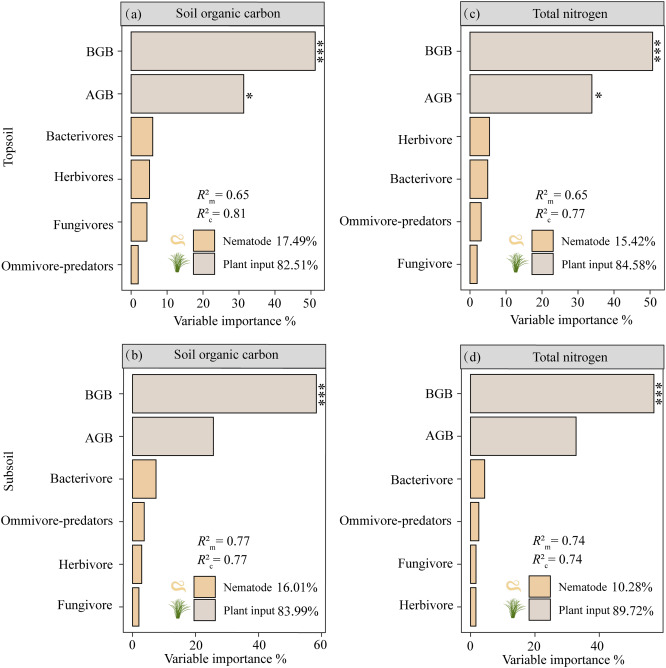Soil nematodes play a critical role in soil nutrient dynamics through their interactions within the food web and their inherent properties. However, the mechanisms by which they respond to and influence soil nutrients during grassland degradation in permafrost regions remain poorly understood. This study investigates the response of soil nematode trophic group composition to grassland degradation and its relationship with soil organic carbon (SOC) and total nitrogen (TN), based on two years of survey data. Grassland degradation decreases the relative abundance of bacterivores while increasing that of herbivores and omnivore-predators. However, this facilitation of omnivore-predators may diminish as degradation progresses. Degradation results in a nonlinear decrease in taxonomic and trophic diversity of nematodes, indicating a loss of environmental heterogeneity. Overall, grassland degradation alters the composition of nematode trophic groups, which is associated with increased soil porosity, elevated pH, reduced soil water holding capacity, and changes in plant resource availability. Nematode trophic groups influence SOC and TN through distinct trophic cascades and by affecting plant growth, accounting for 16.01–17.49 % of SOC and 10.28–15.42 % of TN variability. Although these effects are secondary to plant inputs, which explained 82.51–83.99 % of SOC and 84.58–89.72 % of TN variability, they still highlight the importance of nematode communities in soil nutrient cycling. Our findings elucidate the role of soil nematode food webs in the degradation of permafrost grasslands and provide a valuable reference for studying the impact of soil nematode communities on soil nutrient cycling.

Fig. 5. The relative importance of plant inputs and nematode nutrient groups on soil nutrient changes is shown, with R2m representing the marginal R2 (variation explained by fixed effects) and R2c denoting the conditional R2 (variation explained by fixed and random effects). * represent p < 0.05, *** represent p < 0.001, while percentages reflect the variation explained by each nematode and plant input. Above-ground biomass (AGB), and below-ground biomass (BGB).
The link below will guide you to the reading:
https://www.sciencedirect.com/science/article/pii/S0929139325006778?via%3Dihub
